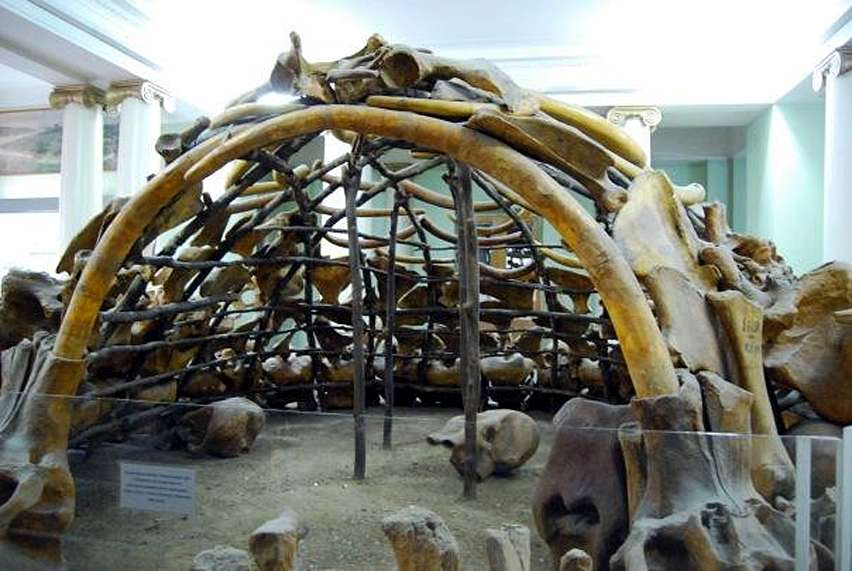Introduction
In 1965, a Ukrainian farmer uncovered ancient huts constructed from mammoth bones in the village of Mezherich. Dating back approximately 15,000 years, these structures serve as a testament to the architectural ingenuity of our ancestors.
A Groundbreaking Discovery
While expanding his basement, the farmer unearthed a piece of a mammoth jawbone. As he continued digging, he realized that the bone was part of a larger structure. Subsequent excavations revealed four huts made from a total of 149 mammoth bones.

Remarkable Construction Techniques
The huts were built using mammoth bones along with other materials such as wood and animal hides. The bones were carefully arranged to create a sturdy framework. This level of craftsmanship highlights the remarkable engineering skills possessed by our prehistoric ancestors.

Insights into Prehistoric Life
Inside the huts, archaeologists discovered various valuable artifacts, including amber and shell jewelry, along with one of the oldest percussion instruments—a “drum” made from mammoth bones and decorated with red ocher. These artifacts suggest that the inhabitants engaged in artistic expression and had complex trade networks.
Historical Significance
The Mezherich discovery reshapes our understanding of human history and architecture. These huts represent some of the oldest known human-built structures and provide deep insights into the culture and society of prehistoric peoples.

Conclusion
The mammoth bone huts in Mezherich stand as a living testament to the creativity and adaptability of our ancestors. They are not merely simple structures but reflect a rich cultural heritage and the evolution of human society during prehistoric times.

